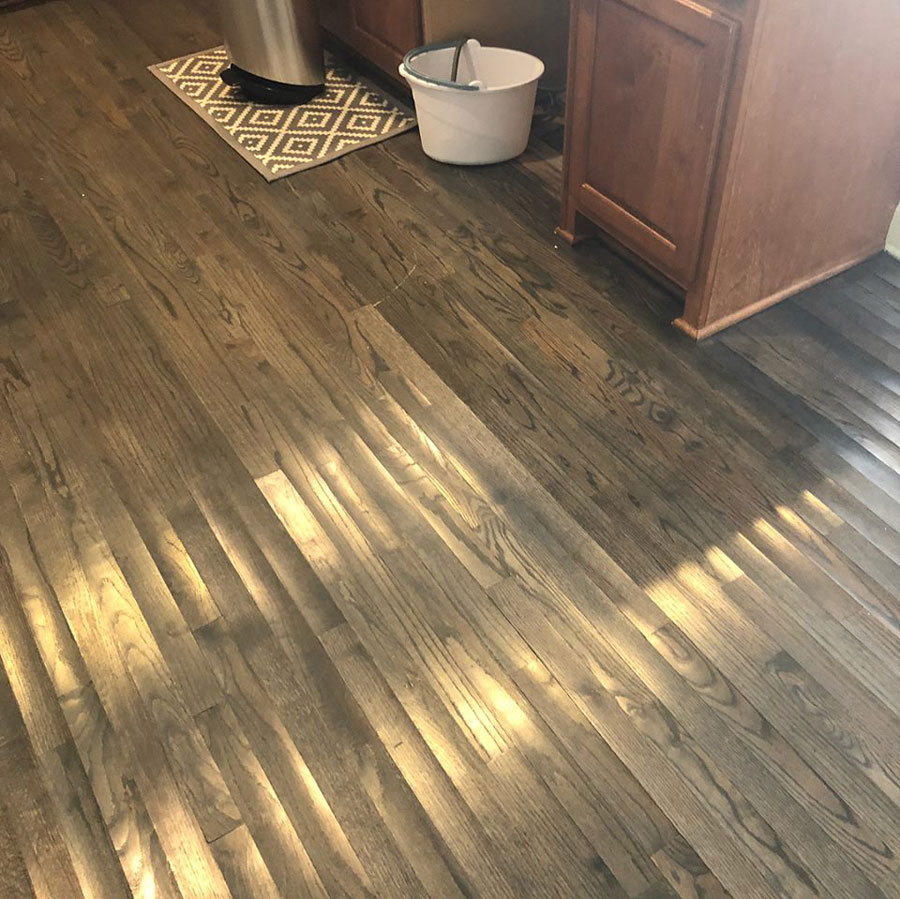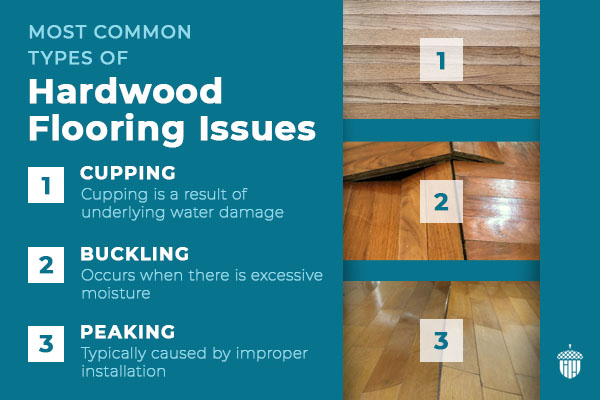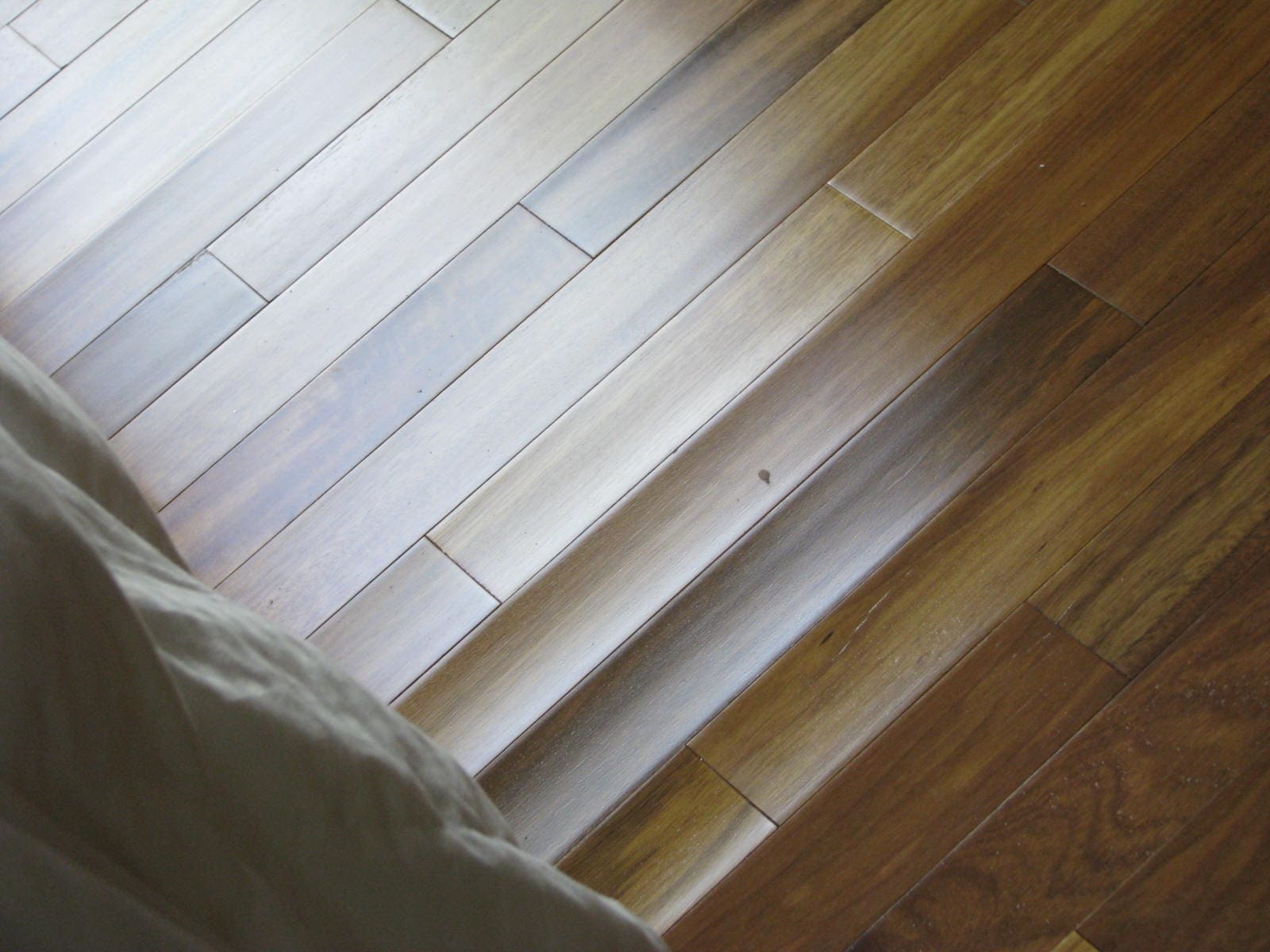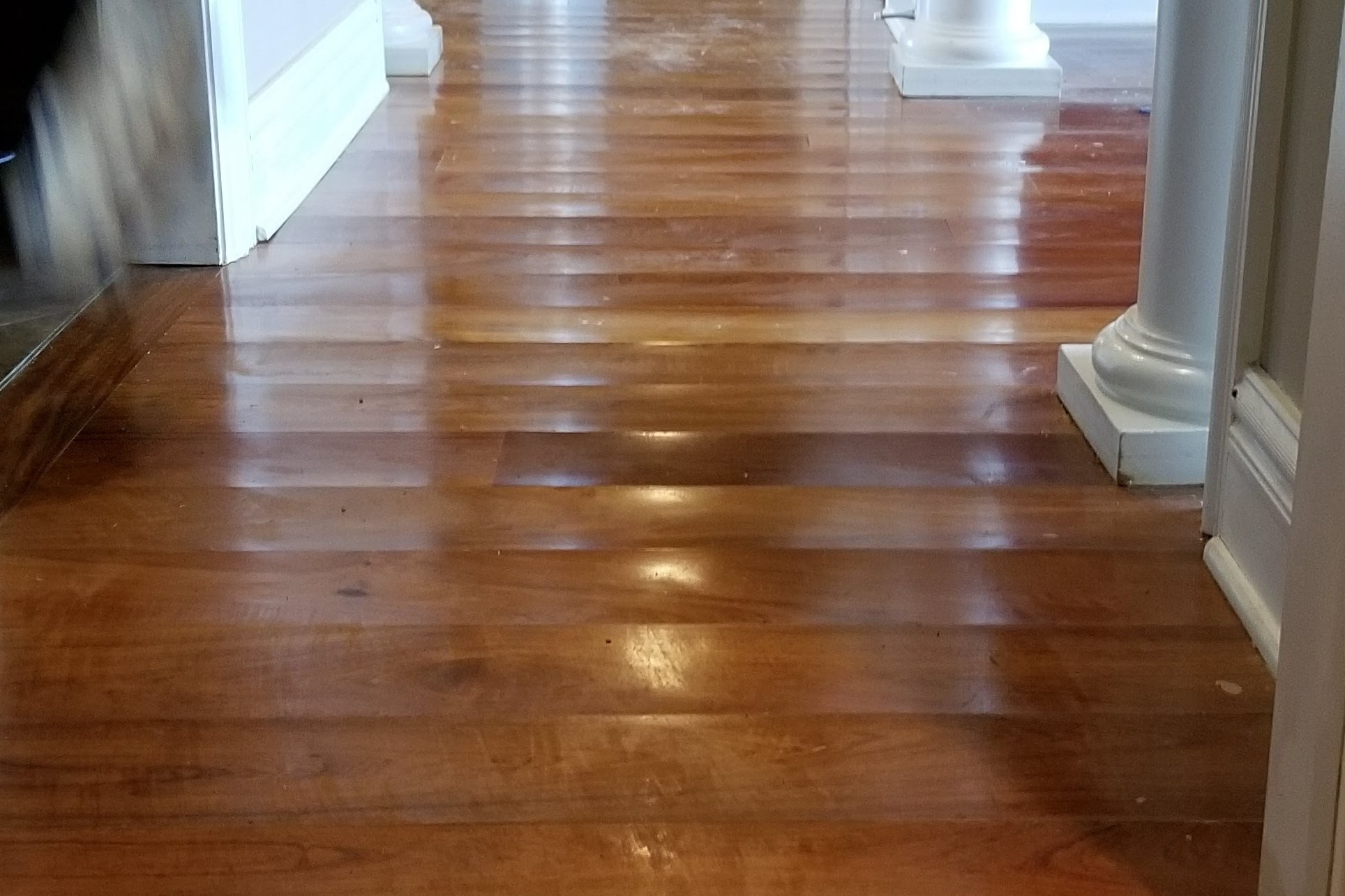Causes of Engineered Hardwood Floor Buckling
Buckling in engineered hardwood floors can be a frustrating issue. Understanding the underlying causes is crucial for prevention and effective repair. Here are the primary reasons why engineered hardwood floors buckle:
Moisture Intrusion
- High Humidity Levels: Excess moisture in the air can cause the wood to absorb water, leading to expansion and buckling.
- Water Leaks: Leaks from plumbing or appliances can seep into the floorboards, causing them to swell and buckle.
- Subfloor Moisture: Moisture trapped under the flooring can rise into the wood, causing it to warp and buckle.
Improper Installation
- Inadequate Acclimation: Failing to acclimate the wood to the room’s temperature and humidity before installation can lead to expansion and buckling.
- Insufficient Expansion Gaps: Not leaving enough space around the edges of the floor for expansion can cause the boards to push against each other and buckle.
- Subfloor Issues: An uneven or improperly prepared subfloor can create pressure points, leading to buckling.
Environmental Factors
- Temperature Fluctuations: Rapid changes in temperature can cause the wood to expand and contract, leading to buckling.
- Seasonal Changes: Seasonal variations in humidity and temperature can cause the wood to expand and contract, resulting in buckling over time.
- Improper Climate Control: Failing to maintain consistent indoor conditions can lead to buckling due to changes in moisture and temperature levels.
Mechanical Damage
- Heavy Furniture: Placing heavy furniture or appliances directly on the floor without proper protection can create pressure points, causing the wood to buckle.
- Improper Maintenance: Using excessive water during cleaning or harsh chemicals can damage the wood and lead to buckling.
- Accidental Impacts: Dropping heavy objects on the floor can cause dents and cracks, leading to buckling over time.
Subfloor Adhesive Failure
- Poor Adhesive Quality: Using low-quality adhesive during installation can result in a weak bond between the floorboards and the subfloor, leading to buckling.
- Improper Adhesive Application: Failing to apply adhesive evenly or using the wrong type of adhesive can cause the floorboards to lift and buckle.
- Moisture-Related Adhesive Breakdown: Excess moisture can break down the adhesive, causing the floorboards to detach from the subfloor and buckle.
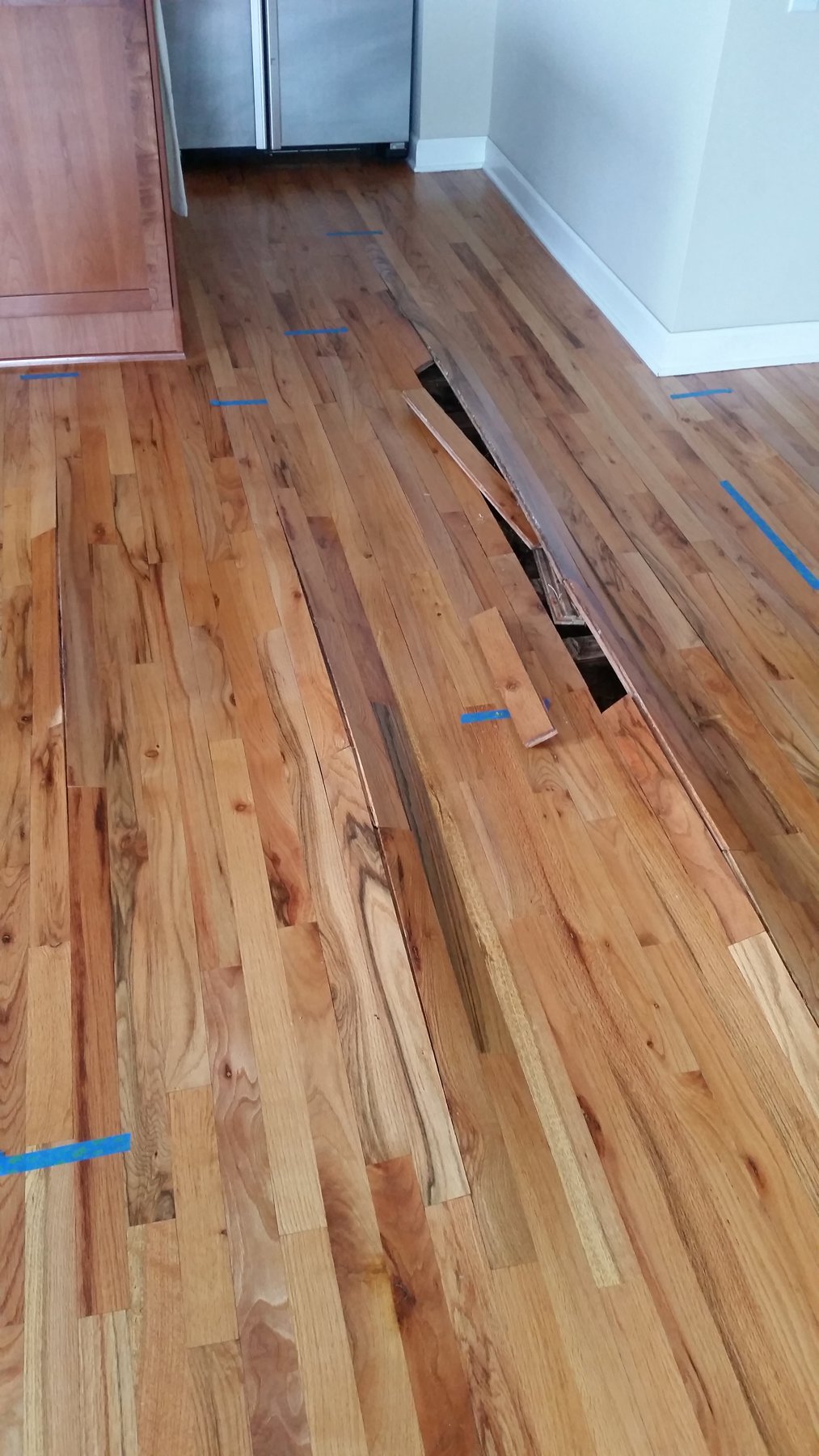
Prevention Methods for Engineered Hardwood Floor Buckling
Preventing buckling in engineered hardwood floors involves taking proactive measures during installation and maintenance. Here are some effective methods to prevent buckling:
Acclimation Process Before installation, allow the engineered hardwood to acclimate to the room’s temperature and humidity for at least 48 to 72 hours. This process helps the wood adjust to the environment, reducing the risk of expansion and buckling. Store the flooring in the room where it will be installed, and keep the boxes unopened during the acclimation period.
Proper Installation Techniques Ensure that the installation is done correctly by following the manufacturer’s guidelines. Leave adequate expansion gaps around the perimeter of the room to allow for natural expansion and contraction. Use high-quality adhesive and apply it evenly to create a strong bond between the floorboards and the subfloor. Check that the subfloor is level, clean, and dry before installation.
Climate Control Maintain a consistent indoor climate to prevent buckling due to temperature and humidity fluctuations. Use a humidifier during dry seasons to maintain optimal humidity levels and a dehumidifier during humid seasons to reduce excess moisture. Keep the indoor temperature stable to prevent rapid changes that can cause the wood to expand and contract.
Moisture Barrier Installation Install a moisture barrier between the subfloor and the engineered hardwood to prevent moisture from seeping into the wood. This barrier can be in the form of a vapor barrier sheet or an underlayment with moisture-resistant properties. The moisture barrier helps protect the wood from moisture intrusion, reducing the risk of buckling.
Regular Maintenance Perform regular maintenance to keep the floors in good condition. Clean the floors with a damp mop and mild cleaner, avoiding excessive water. Wipe up spills immediately to prevent moisture from seeping into the wood. Place rugs or mats in high-traffic areas and under heavy furniture to protect the floors from mechanical damage.
Repair Techniques for Engineered Hardwood Floor Buckling
If your engineered hardwood floors have already buckled, there are several repair techniques to restore their condition. Here are some effective methods for repairing buckled floors:
Assessing the Damage Begin by assessing the extent of the damage. Identify the areas where the floorboards have buckled and determine the underlying cause. Check for signs of moisture intrusion, improper installation, or mechanical damage. Understanding the cause of the buckling will help you choose the appropriate repair method.
Moisture Removal If moisture is the cause of the buckling, address the source of the moisture first. Repair any leaks or water damage in the area. Use a dehumidifier to remove excess moisture from the room and allow the floors to dry completely. In some cases, removing the moisture may cause the floorboards to return to their original shape.
Replacing Damaged Boards For severe buckling, you may need to replace the damaged floorboards. Start by removing the buckled boards using a pry bar or chisel. Cut replacement boards to fit the area and install them using the proper adhesive. Ensure that the new boards are acclimated to the room’s conditions before installation. Leave adequate expansion gaps around the edges to prevent future buckling.
Sanding and Refinishing In cases of minor buckling, sanding and refinishing may be sufficient to restore the floors. Use a floor sander to sand down the buckled areas until they are level with the surrounding floorboards. Apply a new coat of finish to the sanded area to match the rest of the floor. Sanding and refinishing can help smooth out minor imperfections and improve the appearance of the floors.
Professional Assistance If the buckling is extensive or you are unsure of how to proceed, consider seeking professional assistance. A flooring expert can assess the damage and recommend the best course of action. Professional repair services ensure that the job is done correctly and that the floors are restored to their original condition.
Maintenance Tips for Engineered Hardwood Floors
Proper maintenance is essential to prevent buckling and keep your engineered hardwood floors in excellent condition. Here are some maintenance tips to help you care for your floors:
Regular Cleaning Keep your engineered hardwood floors clean by sweeping or vacuuming regularly to remove dust and debris. Use a damp mop with a mild cleaner to clean the floors, avoiding excessive water. Wipe up spills immediately to prevent moisture from seeping into the wood. Avoid using harsh chemicals or abrasive cleaning tools that can damage the floors.
Humidity Control Maintain optimal humidity levels in your home to prevent the wood from expanding and contracting. Use a humidifier during dry seasons to add moisture to the air and a dehumidifier during humid seasons to reduce excess moisture. Keep the indoor temperature stable to prevent rapid changes that can cause the wood to buckle.
Furniture Protection Protect your floors from mechanical damage by placing rugs or mats in high-traffic areas and under heavy furniture. Use furniture pads or coasters to prevent scratches and dents caused by heavy furniture. Avoid dragging heavy objects across the floor, as this can cause damage and lead to buckling.
Routine Inspections Perform routine inspections to identify any signs of damage or buckling early on. Check the floors for any gaps, cracks, or areas where the boards may be lifting. Address any issues promptly to prevent them from worsening. Regular inspections help ensure that your floors remain in good condition.
Professional Maintenance Consider scheduling professional maintenance for your engineered hardwood floors. Professional services can include deep cleaning, sanding, and refinishing to keep the floors looking their best. Regular professional maintenance helps extend the life of your floors and prevent issues such as buckling.
How to Fix Hardwood Floor Problems: Cupping, Crowning, Chatter
The floorboards are buckling again, but were the new boards laid
Buckled Hardwood Floors – Job Analysis. Why? Fixes
What Causes Wood Floor Cupping & What To Do
Hardwood Floor Water Damage Problems Water Damage Restoration
Why Floors Cup and How To Fix Them – Jeffco Flooring
Related Posts:
- Hardwood Floor DIY Cleaner
- Gray Maple Hardwood Flooring
- Red Oak Hardwood Floor
- Hardwood Floor Stain Options
- Engineered Hardwood Floor Buckling
- Hardwood Floor Colors Design
- Hardwood Floor Stain Removal
- Engineered Hardwood Floor Cleaning Tips
- Solid Parquet Hardwood Flooring
- Hardwood Floor Stain Repair
Engineered Hardwood Floor Buckling: A Comprehensive Guide
Engineered hardwood flooring is a popular choice for homeowners because of its durability, beauty, and versatility. It is also more affordable than traditional hardwood flooring and can be installed over concrete or existing floors. While these floors are generally quite durable, there are certain conditions that can cause them to buckle. In this guide, we will explore the causes of engineered hardwood floor buckling, as well as how to prevent it from occurring.
What Causes Engineered Hardwood Floor Buckling?
Engineered hardwood floor buckling occurs when excessive moisture causes the planks to swell and warp. This type of flooring is made up of multiple layers of wood that are glued together and pressed under high pressure. These layers are then topped with a thin layer of real hardwood veneer that gives the floor its beautiful finish. The layers beneath the veneer are much more sensitive to moisture than the top layer and can easily swell if exposed to too much moisture. This swelling causes the boards to buckle, creating a noticeable gap between them.
Common Causes of Excessive Moisture
There are a few common causes of excessive moisture that can lead to engineered hardwood floor buckling. The first is water damage due to flooding or leaks. If your home has experienced any type of flooding, it’s important to immediately remove any standing water and dry out the area as soon as possible. Additionally, if you have any plumbing leaks in your home, it’s important to have them fixed immediately to avoid any further damage.
Another common cause of excess moisture is humidity. If your home has high levels of humidity, it can cause the boards to swell and eventually buckle. To help reduce humidity and protect your floors, it’s important to keep the area well ventilated and use a dehumidifier if necessary.
Finally, one of the most common causes of buckling is improper installation. If your engineered hardwood floors were not installed correctly or with the proper sealant, they can be more susceptible to water damage and buckling. Make sure that you hire a professional installer who has experience with installing this type of flooring in order to ensure that it is done properly.
Preventing Engineered Hardwood Floor Buckling
Fortunately, there are several steps you can take to prevent engineered hardwood floor buckling from occurring in your home. The first step is to make sure that your floors are sealed correctly during installation. Make sure that the installer uses a quality sealant designed specifically for this type of flooring in order to provide optimal protection against water damage. Additionally, be sure to inspect your floors regularly for any signs of water damage or warping.
It’s also important to control humidity levels in your home in order to protect against buckling floors. Use a dehumidifier if necessary and make sure that any plumbing leaks are addressed quickly in order to avoid any further damage. Finally, it’s important to clean up any standing water immediately if you experience flooding or other types of water damage in your home.
FAQs About Engineered Hardwood Floor Buckling
Q: How do I know if my engineered hardwood floors have been installed correctly?
A: The best way to determine if your floors have been installed correctly is by hiring a professional installer with experience installing this type of flooring. They will know what type of sealant needs to be used and how best to install the boards in order to ensure optimal protection against water damage and buckling.
Q: What should I do if my engineered hardwood floors start buckling?
A: If you notice that your engineered hardwood floors have begun buckling, it’s important to take action immediately in order to prevent further damage from occurring. The first step is to try and identify the source of the problem such as flooding or plumbing leaks in order to address it quickly. Additionally, you should find out if there was an issue with the installation such as improper sealing or not enough expansion gaps between the boards which could be causing the problem as well. Finally, be sure to inspect your floors

